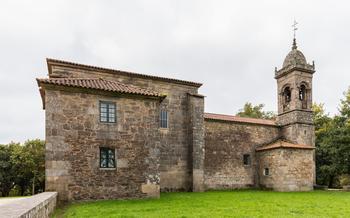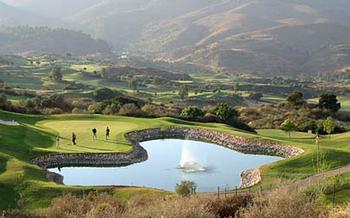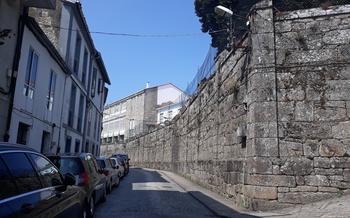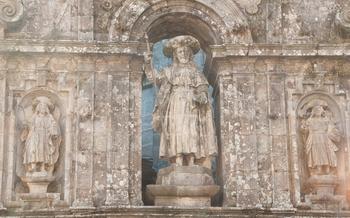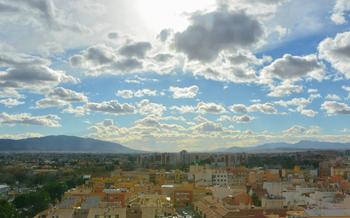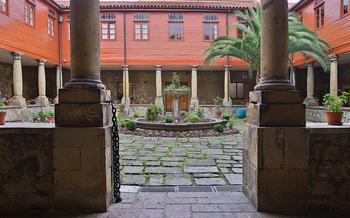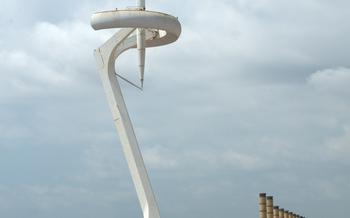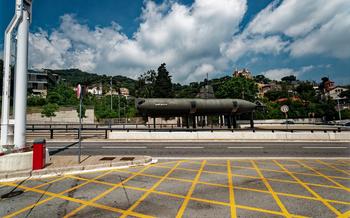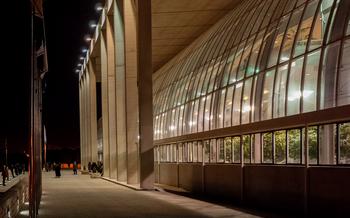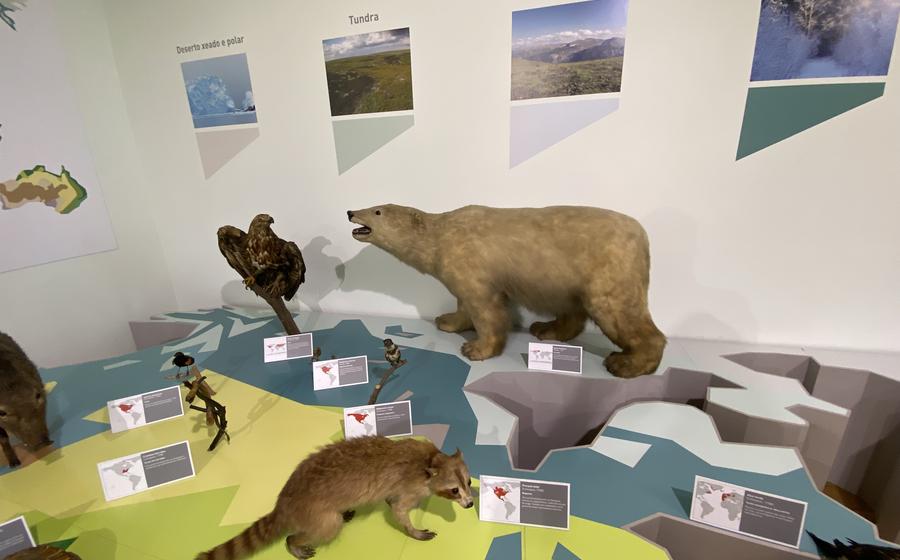
Museum of Natural History (Museo de Historia Natural)
- A Journey Through Time and Nature
- Exploring the Wonders of Natural History
- Dinosaurs and Paleontology
- Biodiversity Showcase
- Marine Life and Oceanography
- Entomology and Insect World
- Minerals and Geology Gallery
- Botany and Plant Life
- Educational Programs and Workshops
- Research and Conservation Efforts
- Temporary Exhibitions and Events
- Accessibility and Visitor Facilities
- Location and Transportation
- Admission and Hours of Operation
- Insider Tip: Unveiling the Museum's Hidden Gem
A Journey Through Time and Nature
The Museum of Natural History in Santiago de Compostela, an architectural gem nestled in the heart of Galicia, invites visitors on a captivating journey through time and the wonders of the natural world. Founded in 1926, the museum showcases Spain's rich biodiversity and natural heritage, offering a glimpse into the intricate tapestry of life on Earth. Its impressive collection includes dinosaur fossils, marine specimens, minerals, and a vast array of flora and fauna, providing visitors with an immersive and educational experience.
The museum's architectural design blends harmoniously with its surroundings, featuring a blend of neoclassical and modern elements. Inside, visitors are greeted by a grand entrance hall that sets the tone for the awe-inspiring journey that awaits them. The museum's scientific significance lies in its extensive research and conservation efforts, contributing to the advancement of knowledge in natural history and the preservation of Spain's precious natural heritage.
Exploring the Wonders of Natural History
The Museum of Natural History in Santiago de Compostela is an awe-inspiring journey through the wonders of the natural world. Its diverse collection of exhibits showcases the incredible biodiversity of Spain, from the majestic Iberian lynx to the colorful array of birds that inhabit the country's diverse ecosystems. Dioramas depicting different habitats, such as forests, wetlands, and coastal environments, bring the natural world to life, allowing visitors to experience the interconnectedness of species and the delicate balance of ecosystems. Interactive displays engage visitors of all ages, providing opportunities for hands-on learning and exploration. Themed sections cover various branches of natural history, from botany and zoology to geology and paleontology, offering a comprehensive understanding of the natural world and its processes. Through its captivating exhibits and educational programs, the museum inspires visitors to appreciate and protect the extraordinary diversity of life on Earth.
Dinosaurs and Paleontology
Prepare to be transported back in time as you step into the captivating world of dinosaurs at the Museum of Natural History. Witness a diverse collection of fossils and life-size models that bring these magnificent creatures to life. Explore the evolutionary history of dinosaurs, from their humble beginnings to their reign as the dominant species on Earth. Interactive displays allow you to delve deeper into paleontological discoveries, while hands-on activities provide a thrilling experience for budding paleontologists. Embark on a journey of discovery and marvel at the wonders of these prehistoric giants.
Biodiversity Showcase
The Museum of Natural History in Santiago de Compostela houses an awe-inspiring collection of flora and fauna that encapsulates the incredible biodiversity of Spain's vibrant ecosystems. Embark on a journey through diverse habitats, from lush forests to arid deserts, and discover the remarkable adaptations and ecological roles of the species that call these environments home. Interactive exhibits bring the wonders of biodiversity to life, highlighting the interdependence of species and the delicate balance of ecosystems. Through engaging displays and educational programs, the museum emphasizes the importance of conservation and encourages visitors to become stewards of the natural world.
Marine Life and Oceanography
Descend into the depths of the captivating marine world within the Museum of Natural History. Immerse yourself in the wonders of Spain's underwater ecosystems through awe-inspiring exhibits showcasing the diversity of marine life. Encounter a mesmerizing array of aquatic plants, fish, and invertebrates, each playing a vital role in the delicate balance of the ocean's ecosystems.
Interactive displays on oceanography and marine conservation allow you to delve deeper into the mysteries of the underwater realm. Learn about the intricate relationships between marine organisms and their environment, and gain insights into the impact of human activities on these fragile ecosystems. Educational programs on climate change and its effects on marine life foster a sense of responsibility and inspire action towards preserving the health of our oceans. So, prepare to be captivated by the beauty and majesty of the marine world as you embark on an unforgettable journey through the depths of the Museum of Natural History.
Entomology and Insect World
The Museum of Natural History boasts an impressive collection of insects, an often-overlooked group within the animal kingdom. This section of the museum sheds light on the incredible diversity and ecological significance of insects. Visitors can marvel at a vast array of specimens representing different regions of Spain, from common species to rare and exotic insects. Interactive displays bring the insect world to life, allowing visitors to explore insect behavior, life cycles, and their intricate adaptations. Educational programs and workshops focus on the vital role insects play in pollination, pest control, and the overall balance of ecosystems. Whether you're a seasoned entomologist or simply fascinated by the insect world, this section of the museum promises a captivating and educational experience.
Minerals and Geology Gallery
The Minerals and Geology Gallery at the Museum of Natural History takes visitors on a journey through the fascinating world of rocks, minerals, and gemstones. This gallery showcases a diverse collection of geological wonders found in Spain, from shimmering crystals and colorful gemstones to colossal rocks that tell stories of the Earth's history. Interactive exhibits allow visitors to explore the formation of minerals and geological processes that have shaped our planet's landscapes.
Educational programs and activities for kids provide hands-on opportunities to learn about rock identification, crystallography, and the importance of geology and mining. This gallery is a treasure trove for anyone interested in the wonders of the Earth's crust and the processes that have shaped our planet over millions of years.
Botany and Plant Life
The Museum of Natural History in Santiago de Compostela houses an extensive collection of plants, encompassing both native species and exotic flora. Engaging exhibits showcase the crucial role of plants within ecosystems and their significance to human life. Interactive displays delve into the fascinating world of plant adaptations and reproduction, providing visitors with a deeper understanding of the botanical realm. Educational programs highlight the vital role of plants in food production and medicine, underscoring their indispensable contributions to human well-being. Through these exhibits and activities, the museum not only educates visitors about the diversity and importance of plant life but also fosters a greater appreciation for the natural world and its intricate interconnectedness.
Educational Programs and Workshops
The Museum of Natural History in Santiago de Compostela offers a diverse range of educational programs and workshops tailored to students of all ages, fostering their interest in natural history, conservation, and sustainability. These programs provide a unique opportunity for students to engage with experts, participate in hands-on activities, and explore the wonders of the natural world.
Schools are encouraged to organize group visits to the museum, where students can embark on guided tours, participate in interactive workshops, and learn from experienced naturalists. The museum's educational programs are designed to align with school curricula, complementing classroom learning with real-world experiences.
Workshops cover a wide range of topics, including biodiversity, ecosystems, paleontology, and conservation. Students can dissect owl pellets to discover the secrets of an owl's diet, create their own fossil imprints, or learn about the importance of pollinators in maintaining healthy ecosystems.
The museum also offers resources and materials for teachers to incorporate natural history into their lessons. These resources include lesson plans, activity sheets, and multimedia presentations. By integrating natural history into the classroom, teachers can help students develop a deeper understanding of the natural world and its significance.
Research and Conservation Efforts
The Museum of Natural History in Santiago de Compostela is not just a place to showcase and exhibit; it is also an active center for scientific research and conservation initiatives. The museum collaborates with universities, research institutions, and conservation organizations to conduct studies on the natural heritage of Spain and contribute to the preservation of endangered species and habitats.
Its researchers are involved in various projects focused on understanding the ecology, behavior, and conservation status of different species, including the Iberian wolf, the brown bear, and the Mediterranean monk seal. The museum also participates in conservation programs for threatened plant species, such as the Iberian lynx, and works to raise awareness about the importance of protecting and restoring natural ecosystems.
Through its research and conservation efforts, the Museum of Natural History in Santiago de Compostela plays a vital role in promoting the understanding and preservation of Spain's rich natural heritage for future generations. Visitors to the museum can learn about these initiatives and discover how they can contribute to conservation efforts through educational programs, exhibits, and interactive displays.
Temporary Exhibitions and Events
The Museum of Natural History in Santiago de Compostela consistently organizes an array of temporary exhibitions and captivating events that delve into the depths of various natural history-related themes and subjects. These exhibitions offer a refreshing and dynamic perspective to complement the museum's permanent collection. Past exhibitions have showcased topics such as the fascinating world of marine mammals, the evolution of life on Earth, and the intricate relationship between humans and the environment.
The museum also hosts a diverse range of events, including lectures by renowned scientists and naturalists, educational workshops for children and families, and immersive film screenings that showcase the wonders of the natural world. These events provide an excellent opportunity for visitors to engage with experts, participate in discussions, and gain insights into cutting-edge research and conservation initiatives. Seasonal programs and activities, such as themed guided tours and family-friendly workshops, add an extra layer of excitement and engagement for visitors of all ages.
Accessibility and Visitor Facilities
The Museum of Natural History in Santiago de Compostela is committed to ensuring an inclusive and enjoyable experience for all visitors. Wheelchair accessibility is a priority, with ramps, elevators, and accessible restrooms throughout the museum. Guided tours and audio guides are available in multiple languages, catering to visitors from diverse backgrounds. The museum also offers a range of facilities to enhance the visitor experience, including a well-stocked museum shop selling souvenirs, books, and educational materials. For those seeking a quick refreshment or a light meal, a cafeteria is available on-site, providing a convenient option for visitors to recharge during their visit.
Location and Transportation
The Museum of Natural History is conveniently situated in the heart of Santiago de Compostela, making it easily accessible for visitors. Located at Plaza de Galicia, 1, 15704 Santiago de Compostela, A Coruña, Spain, the museum is just a short walk from the city's historic center, allowing visitors to combine their museum visit with sightseeing and exploration of the city's other attractions.
To reach the museum by public transportation, visitors can take advantage of the city's extensive bus network. Several bus lines, including the C1 and C2, stop within a short walking distance of the museum. Additionally, the museum is located near the Intermodal Station of Santiago de Compostela, which offers connections to regional and national train services.
For those arriving by car, parking is available at the nearby Plaza de Galicia parking garage. The museum's central location ensures easy access from major roads and highways, making it convenient for visitors to include in their itinerary while exploring the city and its surroundings.
Admission and Hours of Operation
Admission fees to the Museum of Natural History in Santiago de Compostela are reasonable, with discounts available for children, students, and seniors. It's advisable to purchase tickets online in advance, especially during peak tourist season, to avoid queues and secure your entry. The museum's hours of operation vary depending on the time of year, so it's essential to check their website or contact them directly for the most up-to-date information.
Insider Tip: Unveiling the Museum's Hidden Gem
Amidst the vast collection of exhibits at the Museum of Natural History, there lies a hidden gem that often goes unnoticed by visitors. Tucked away in a corner of the paleontology section, you'll find an unassuming display showcasing a remarkable fossil of a feathered dinosaur. This exquisitely preserved specimen offers a rare glimpse into the evolutionary transition from dinosaurs to birds, providing valuable insights into the origins of avian flight. Don't miss this opportunity to witness firsthand this extraordinary relic of prehistoric life and gain a deeper understanding of the interconnectedness of life on Earth.
